
Wine
Wine (and other fermented foods, like beer, pickles, yogurt, and sauerkraut) may naturally contain a substance known as histamine. Since histamine is also a chemical released by the body’s allergy cells during an allergic reaction, these foods can trigger allergy-like responses when consumed during your allergy season. Jeffrey G. Demain, MD, who serves on the board of directors at the American Academy of Allergy Asthma and Immunology, says, “Sulfites and metabisulfites are a natural product of fermentation and can be added as preservatives—this is most commonly a problem associated with red wine and some beers.” Other products that can also trigger spring allergy symptoms include grains, yeasts, and contaminants. “Rarely, anaphylaxis has been reported,” he adds. If you find that sulfites trigger your allergies, then try a more distilled beverage. Otherwise, just say no to adult beverages till the season passes. Check out these 20 bizarre things you never knew you could be allergic to.
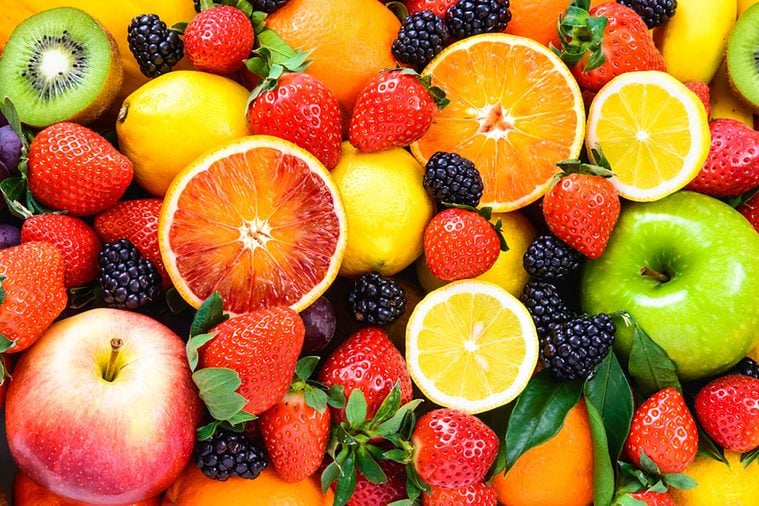
Fresh fruit
Fruit may be great for your health as a source of vitamins and minerals, but for oral allergy syndrome sufferers, all they cause is discomfort. Cross-reacting allergens found in pollen and raw fruits, vegetables, and some tree nuts can trigger symptoms of oral allergy syndrome (also known as pollen-food syndrome) because the immune system recognizes the pollen and similar proteins in the food and directs an allergic response to it. The biggest oral allergy triggers are fresh or dried fruits (such as nectarines, peaches, cherries, and apples) and vegetables, including celery, carrots, string beans, snap peas, and peppers, and even some nuts, like walnuts and almonds. Here are 11 more unusual things that make allergies worse.
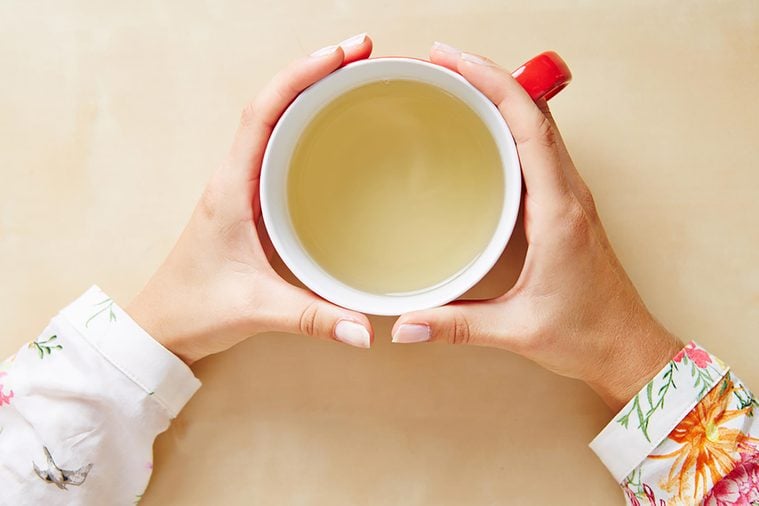
Chamomile tea
For those with a ragweed allergy (commonly referred to as “hay fever”), chamomile tea is one hot drink that’s best avoided. The chamomile plant is part of the same family as ragweed, meaning cross-reactivity problems are fairly common. The proteins in chamomile and ragweed are similar enough to cause symptoms of an allergic reaction: itching, a runny nose, and even hives, according to the National Institutes of Health.
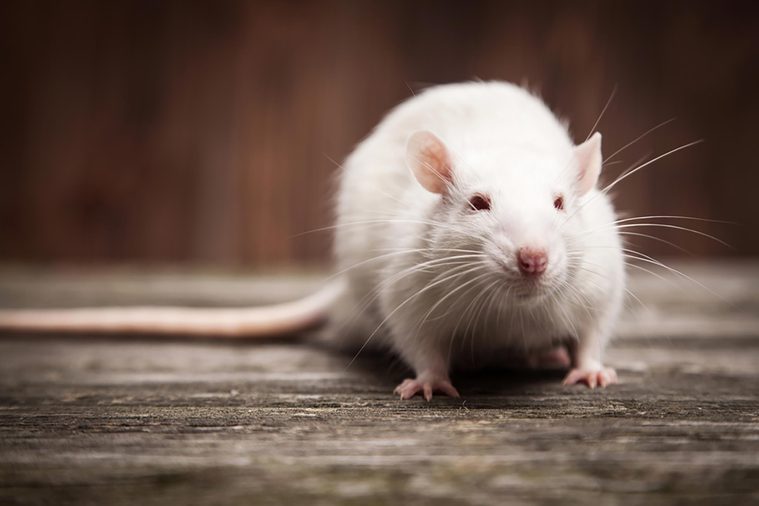
Rats
Homes, schools, and public buildings may be home to rodents, which can trigger allergies via urine protein, saliva, and pelt. Gross! Eye, nasal, and asthma symptoms are most common, and this problem calls for a professional exterminator. Here are the tricks allergists use to keep their own allergies at bay.

Pet dander
Even if you’re not allergic to your pet per se, dogs and cats can bring pollen, mold, and other allergens into your home. “Some people are so sensitive that they can develop eye, nasal, and respiratory symptoms just when they’re around someone with pets,” says Dr. Demain. “Pet dander has been demonstrated to transfer to the clothing of children in school.” The Humane Society of the United States recommends creating an “allergy-free” zone in the home (such as the allergic person’s bedroom), using HEPA air cleaners throughout the entire home, and bathing the pet on a weekly basis. Check out these recommended air purifiers for pets to help find relief.

Pregnancy
We’re not suggesting you’ll be allergic to your unborn child, but up to 60 percent of pregnant women suffer from gestational rhinitis (rhinitis associated with pregnancy), which presents as nasal congestion toward the end of the third trimester. “Saline nasal spray has been demonstrated to be the most effective treatment,” says Dr. Demain. “It should disappear completely within two weeks after delivery.” Don’t fall for the worst pieces of advice allergy doctors have ever heard.
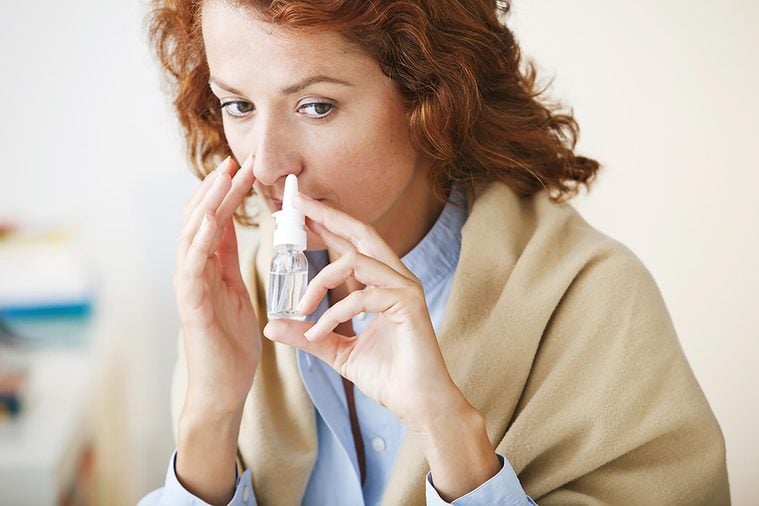
Nasal decongestants
The very thing you’re relying on to ease your spring allergy symptoms could be making them even worse. Rhinitis medicamentosa (or medication-induced rhinitis) is caused by overuse of nasal decongestants. “In some patients, even several days of regular use of decongestant sprays leads to rebound nasal congestion as the medication wears off, prompting patients to administer the medicine more frequently to obtain relief,” says Dr. Demain. “This begins a vicious cycle of nasal congestion both caused and temporarily relieved by the medication with escalating use and eventual dependency. Using nasal saline and possibly nasal steroids may help reduce the nasal symptoms once the decongestant is withdrawn.” Make sure you know these 10 new solutions for seasonal allergies that you haven’t heard of yet.

Books
If you have a mold allergy, you’ll want to keep your bookcase as clean and fresh as possible. This is because fungi grow in damp areas and can thrive on the pages of old books (and newspapers). The Asthma and Allergy Foundation of America recommends throwing away or recycling old books and newspapers. Other potentially moldy items in your home that can trigger allergy symptoms include damp carpet, wet clothes, tiles and grout, and garbage cans. To reduce mold in your house, use an electric dehumidifier to remove moisture and keep humidity in your house below 45 percent, quickly repair any plumbing leaks, and increase air flow by opening doors between rooms, moving furniture away from walls and using fans if needed.

Swimming
Jumping into a cold lake on a hot day can trigger allergy symptoms due to “Skier’s nose,” a form of non-allergic rhinitis. “The actual trigger is temperature change, particularly cold temperatures,” explains Dr. Demain. “This is a result of neural stimulation, with heightened response to cold stimulation of the nasal mucosa. Since this is a cholinergic response (relating to nerve cells in which acetylcholine acts as a neurotransmitter), an anticholinergic nasal spray is the most effective therapy.” These
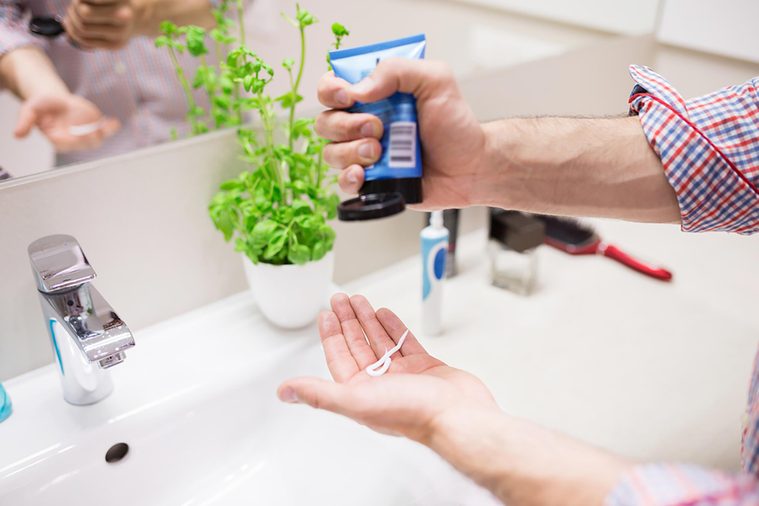
Hair products
According to Clifford Bassett, MD, medical director of Allergy and Asthma Care of New York, the gels, pastes, sprays, and serums you use to tame your hair every day could be triggering your allergy symptoms. “Hair gels and pastes cause the hair to become a pollen magnet,” he says. If you absolutely can’t live without your hair products, wash your hair daily, ideally right before bed, to remove the trapped pollen. Here are 17 more tricks to keep spring allergy symptoms from taking over your life.

Candles
That beautiful scented candle in your home could be triggering vasomotor rhinitis, a condition that triggers symptoms like sneezing and nasal congestion in the absence of allergies. In fact, any source of fragrance, smoke, odor, or fumes (such as aerosols, perfumes, and even the fragrance of ornamental flowers) can provoke allergic symptoms. “Someone may think they are allergic to roses or lilacs, but it’s actually an irritant or neural response to the fragrance provoking the response,” explains Dr. Demain, who recommends topical anticholinergics to control the symptoms. Consider buying an air purifier for smoke, and follow these rules for how to allergy-proof your entire house to relieve your symptoms.